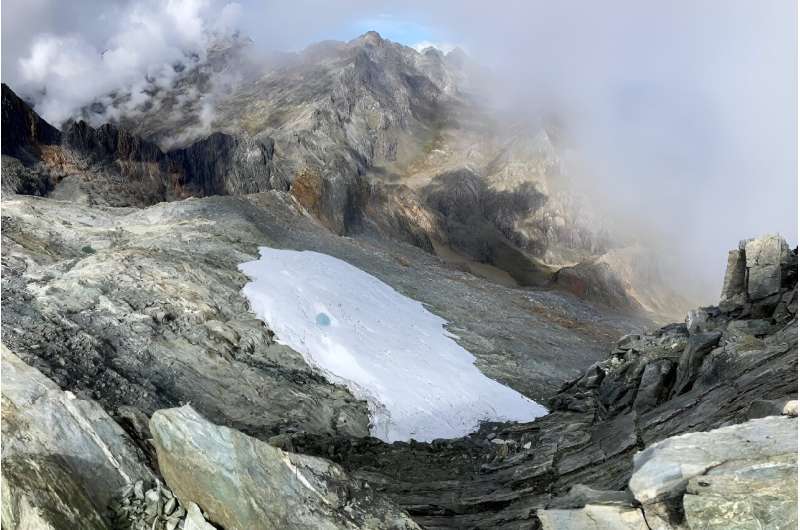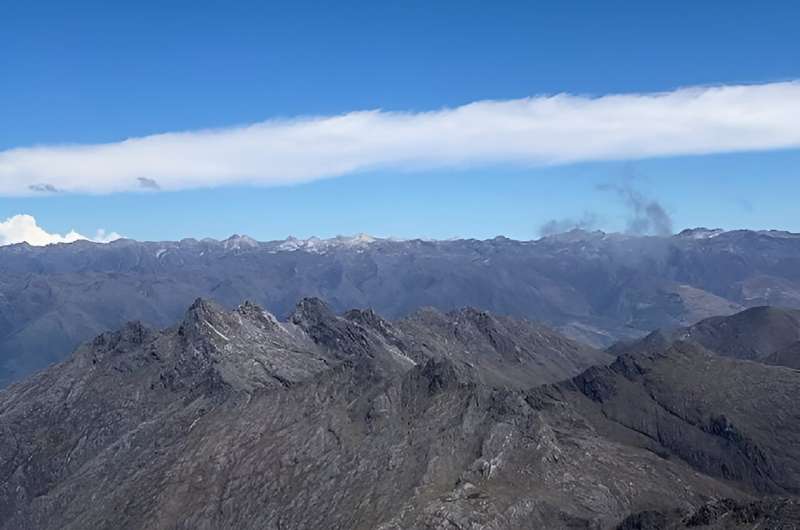At beginning of 20th century, Venezuela had 6 glaciers
May 9 (UPI) -- Venezuela is the first country in modern history to lose all of its glaciers after climate scientists declared its remaining glacier little more than an ice field.
Climatologist Maximiliano Herrera earlier this week posted on X that Venezuela's Humboldt Glacier has shrunk to an area of two hectares and has gone static, downgrading it to an ice field.
The Humboldt Glacier, also known as La Corona, was the last remaining one in Venezuela after the country lost at least five others in the past century due to the effects of climate change.
Several glaciologists now say the clump of ice clinging to the Sierra Nevada National Park in the Andes now is too small to be considered a glacier.
Related
Florida will invest billions to prevent potential biodiversity crisis
While there is no global standard for the minimum size an ice mass must be to be considered a glacier, the U.S. Geological Survey said 10 hectares is a commonly accepted metric
Glaciologists James Kirkham with the International Cryosphere Climate Initiative and Miriam Jackson with the International Centre for Integrated Mountain Development said in the joint statement to the BBC that glaciologists define a glacier as an "ice mass that deforms under its own weight."
Mark Maslin, a professor of earth system sciences at University College London, told the BBC that "glaciers are ice that fills valleys" and an ice field the size of Humboldt is "not a glacier."
In the beginning of the 20th century, Venezuela boasted six glaciers spanning a combined 386 square miles.
Humboldt used to cover 450 hectares, but researchers at the University of Los Andes in Colombia told the news media in March that it had melted to just two hectares.
A study from 2020 suggested the glacial area in Venezuela shrank by 98% between 1952 and 2019. The rate of glacial retreat rose around 1998 to a peak of nearly 17% per year from 2016 to 2019.
While researchers say glaciers are intimately linked with cultural identity, their rapid loss also leads to rising sea levels.
The Venezuelan government in December attempted to remediate the disappearing ice field by covering it with a thermal blanket, similar to covers used in European countries to protect ski slopes in warmer weather.
Climate scientists criticized the measure, arguing the synthetic cover will degrade and contaminate the environment with microplastics over time.
Maslin said mountain glaciers need enough ice to reflect the sun's rays and keep the air cool during the summer months. Now the Humboldt Glacier has lost so much ice that there's no direct way to reverse the melt.
"Once a glacier's gone, the sunlight heats the ground, makes it much warmer and makes it much less likely to actually build ice up over the summer," he said.
Kirkham and Jackson said between 20% to 80% of glaciers globally could be gone by 2100 and "a portion of this loss is already locked in" due to carbon emissions.
Rapidly lowering emissions, however, could save other glaciers, "which will have enormous benefits for livelihoods, and energy, water and food security," they said.
Herrera said on X that Indonesia, Mexico and Slovenia were the next countries most likely to face glacier extinction.
Maslin said those countries "make logical sense" because of their proximity to the equator and their low-lying ice caps, which are more vulnerable to global warming.
by Margioni BERMÚDEZ
A small patch of ice among bare rock is all that remains of Venezuela's last glacier, which the government hopes to restore to its former glory using a geothermal blanket
Experts say that would be too little too late.
While glacier melt is a global phenomenon blamed on climate change, Venezuela is the first country in the Andes mountain range—which stretches all the way to Chile in the south—to lose all its glaciers.
Venezuela has lost five in total, adding up to some 1,000 hectares of ice, in the last century or so.
"In Venezuela there are no more glaciers," Julio Cesar Centeno, a university professor and advisor to the UN Conference on Environment and Development (UNCED), told AFP.
"What we have is a piece of ice that is 0.4 percent of its original size."
Centeno and other experts are convinced the loss of La Corona glacier on Humboldt peak, some 4,900 meters (more than 16,000 feet) above sea level, is irreversible.
But the government announced a plan in December to slow and even reverse the thaw by covering the area with a thermal mesh made of polypropylene plastic warding off the Sun's rays.
The cover was delivered to Humboldt peak by helicopter in 35 separate pieces, each measuring 2.75 meters by 80 meters, in December, but the government has not said whether it has already been unrolled.

Similar covers are used in European countries, mainly to protect ski slopes in warmer weather.
"It allows us to maintain the temperature of the area and prevent the entire glacier from melting," said Jehyson Guzman, governor of the western state of Merida that used to be home to Venezuela's glaciers.
Nothing left to save
But scientists of the University of Los Andes (ULA) are skeptical.
They say La Corona ceased to be a glacier since shrinking to just two hectares of the 450 hectares it used to cover. Scientists use a guideline of 10 hectares as the minimum size of a glacier.
Before La Corona, Venezuela also lost its glaciers on the peaks of El Leon, La Concha, El Toro and Bolivar.
"It is an illusory thing, a hallucination, it is completely absurd," said Centeno of the government's plan.
He and a team of other scientists will ask Venezuela's supreme court to scrap the project, which they say could have other, negative, impacts as the plastic blanket degrades over time.
"These micro plastics are practically invisible, they end up in the soil and from there they go to crops, lagoons, into the air, so people will end up eating and breathing that," he said.

Enrique La Marca, zoologist and ecologist, fears the cover could harm rare species of mosses and lichens, even hummingbirds that call the rocky environment home.
"That life will die because it will not have the necessary oxygen," he said.
An ice remnant
The most optimistic estimates give the remaining ice-cover "four to five years" before disappearing completely, said La Marca, who researches the impacts of glacier melt due to climate change.
Some calculations point to a mere two years.
"It's an ice remnant," not a glacier, added physicist Alejandra Melfo, a ULA expert on the topic.
Forestry engineer and mountaineer Susana Rodriguez said the disappearance of La Corona will also affect Venezuelan tourism, as many people who used to climb the Humboldt peak did so on the ice.
"Now everything is rock, and what remains is so deteriorated that it is risky to step on it. There are cracks," said Rodriguez, who has accompanied several outings on the glacier.
© 2024 AFP

No comments:
Post a Comment